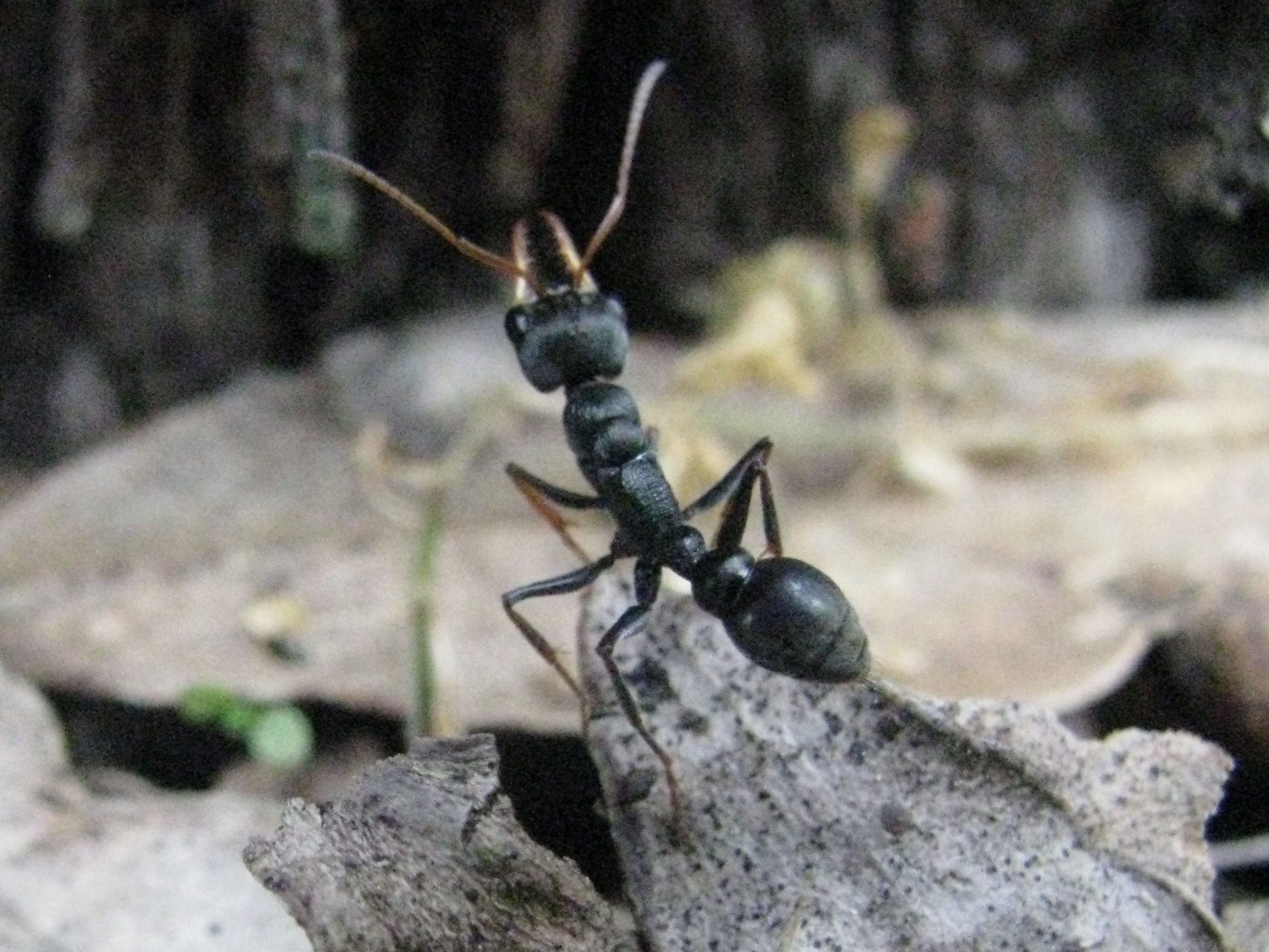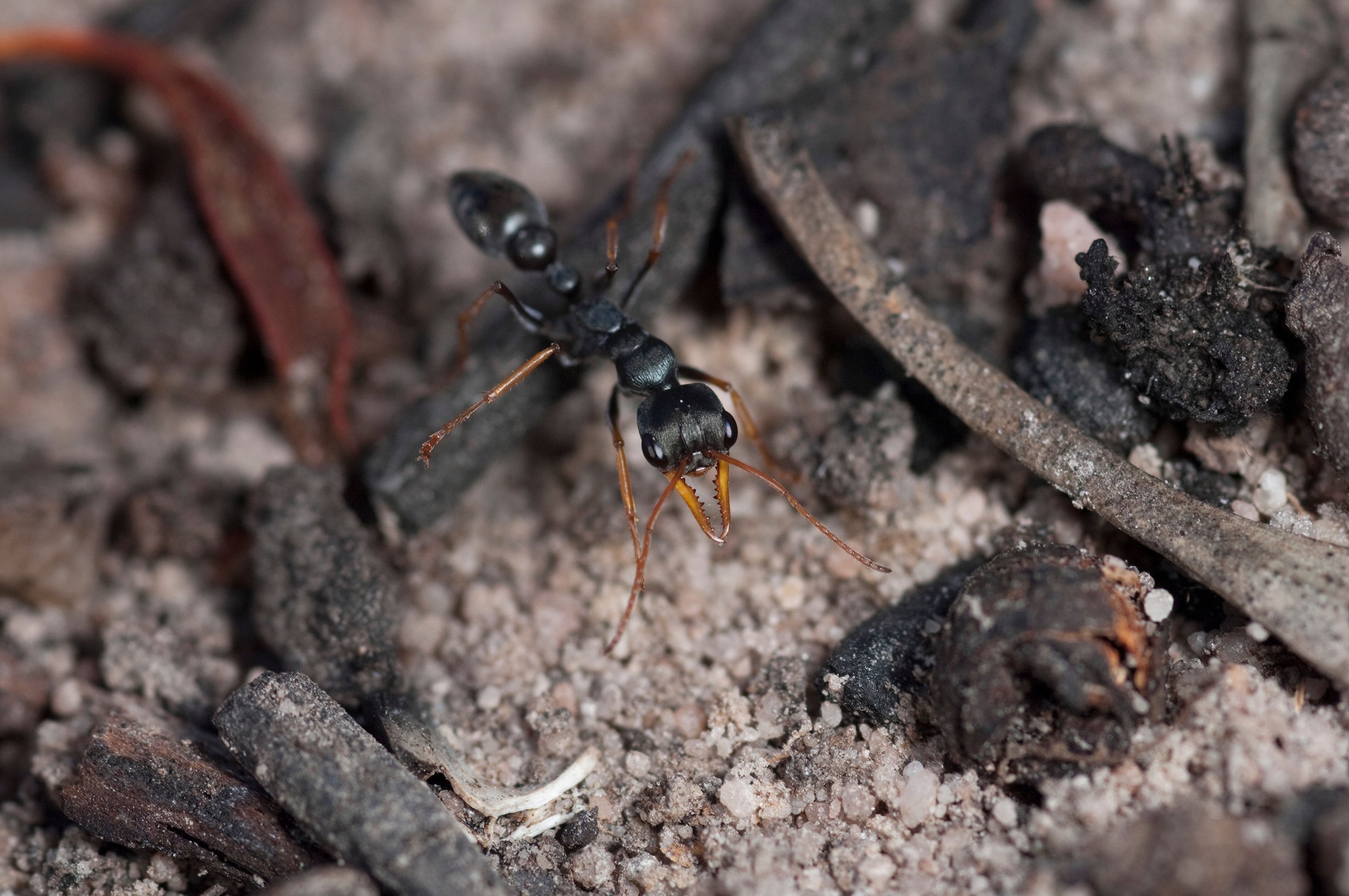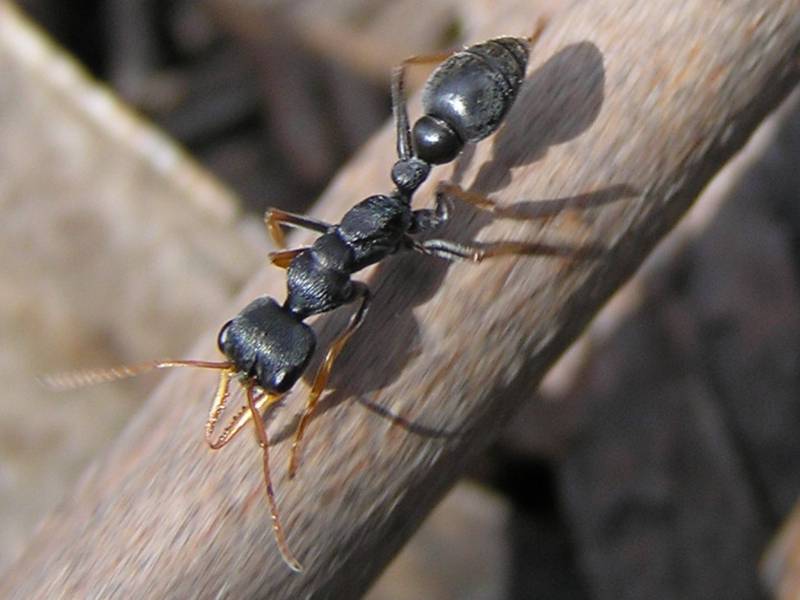
Jumper Ant, Jumping Jack Myrmecia nigrocincta
December 25, 2023 Explore the physical characteristics, behavior, and impact of jack jumping ants on ecosystems. Learn about their habitat, feeding habits, and interactions with other species. Discover control methods and ongoing research efforts in jack jumping ant conservation. Overview of Jack Jumping Ants Physical Characteristics

Jumper Ant, Jumping Jack Myrmecia nigrocincta
The Jack jumper ant, Myrmecia pilosula, also known as a hopper ant, is found in Australia and is a species of bull ant. They are a medium-sized ant measuring around 0.4 inches (1 cm) in length. How did the Jack jumper ant get its name? They can jump a long way. They can jump around 2 to 3 inches (51 to 76 mm).

ants media Encyclopedia of Life
Jack jumpers (also known as jumper ants, hopper ants, jumping jacks) are medium sized ants, 8-10mm long with a black body but pale jaws and legs. They can jump 10cm repeatedly when defending themselves. They are related to the larger, less aggressive and less active inchman ants which are 3cm long.

Jumper Ant, Jumping Jack Myrmecia nigrocincta
Ants of this genus are popularly known as bulldog ants, bull ants, or jack jumper ants due to their ferocity and the way they hang off their victims using their mandibles, and also due to the jumping behaviour displayed by some species. [6] Other common names include "inch ants", "sergeant ants", and "soldier ants".

Jumping Jack Bull Ant / Myrmecia pilosula Queen Only Ant Keeping Depot
The jack jumper ant ( Myrmecia pilosula ), also known as the jack jumper, jumping jack, hopper ant, or jumper ant, is a species of venomous ant native to Australia.

Jack jumper ants Specifics, Life cycle & Important Habits FPC AU
Tasmanians were hospitalised at the highest rate for ant, tick and caterpillar stings in 2017-18. Experts blame this on the prevalence of jack jumper ants, a highly aggressive species, in Tasmania.

Beware the jack jumper ant Australian Geographic
Jack jumper ants' life cycle. These ant species can have up to four queens in a colony. Despite that fact, the jack jumper worker ants can reproduce on their own even without a queen around. A queen can mate with up to nine males during a reproductive period. In most cases, though, the queen limits her choice to just one or two candidates.

Jumper Ant, Jumping Jack Myrmecia nigrocincta
What is a Jack Jumper Ant? Most Australian native stinging ants are from the genus Myrmecia. This group is broadly subdivided into Jack Jumper Ants and bull dog ants. Bull dog ants are large, around 15-25 mm long, whereas Jack Jumper Ants are generally 10 to 15mm long and often display jerky, jumping movements.

Australian Jack Jumper Ant Facts Controlling Jack Jumper Ants Near Gardens
The jack jumper ant ( Myrmecia pilosula ), also known as the jack jumper, jumping jack, hopper ant, or jumper ant, is a species of venomous ant native to Australia.

Jumper Ant, Jumping Jack Myrmecia nigrocincta
The jack jumper ant, scientifically known as Myrmecia pilosula, is a venomous species of ant that can be found in the southern parts of Australia. These ants are known for their unique ability to jump and their aggressive behavior when provoked. They have a distinct appearance, with their black body and reddish-orange mandibles.
Jack jumper ants send more people to hospital in Tasmania than in rest of Australia ABC News
What is a jack jumper ant? Jack jumper ants belong to a genus of jumping ants found in Australia. They are large ants, measuring about one-half inch (4 cm.), although the queens are even longer. When they're threatened, jack jumper ants can jump 3 to 4 inches (7.5-10 cm.).

Jack Jumper Ant Myrmecia pilosula
Jack Jumper ants are social insects that live in colonies, which can consist of thousands of individuals. The colony is organized into different castes, including workers, soldiers, and the queen. The life cycle of Jack Jumper ants starts with the queen laying eggs, which then hatch into larvae.

Jumper Ant, Jumping Jack Myrmecia nigrocincta
The jack jumper ant ( Myrmecia pilosula ), also known as the jack jumper, jumping jack, hopper ant, or jumper ant, is a species of venomous ant native to Australia.

Jumper Ant, Jumping Jack Myrmecia nigrocincta
Jack Jumper Ant. Most Australian native stinging ants are from the genus Myrmecia. Myrmecia are broadly subdivided into "Jumper ants" and "Bull Dog ants". Bull Dog ants are large, around 15-25 mm long, whereas Jumper ants are generally 10 to 15mm long and often display jerky, jumping movements. Jumper Ants are also known as "Hopper.

Jack Jumper Ant Nice Close Up Footage YouTube
Myrmecia nigrocincta, commonly known as the jumper ant or jumping jack, is an ant of the genus Myrmecia. The species was first described by Frederick Smith in 1858. Colonies of this ant are abundant in eastern Australia.

Jump Jack Ants fasrbikes
Jumping ants: a sting can kill by Claudine Ryan When Claudine Ryan learned her adventurous little boy was allergic to native ant stings, it took many months before she felt confident to let him out of her sight. Published 15/11/2007 Claudine Ryan An allergy develops The action plan Living with an allergy Venomous ants facts More info